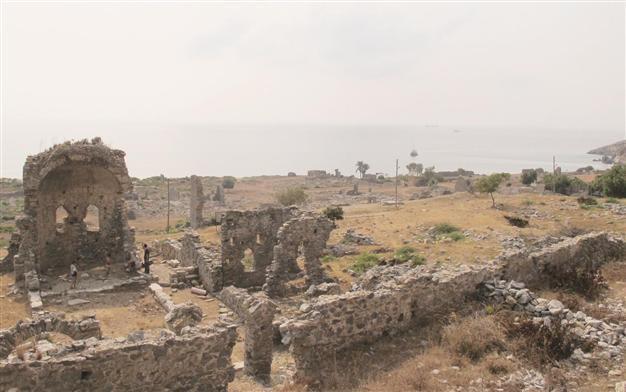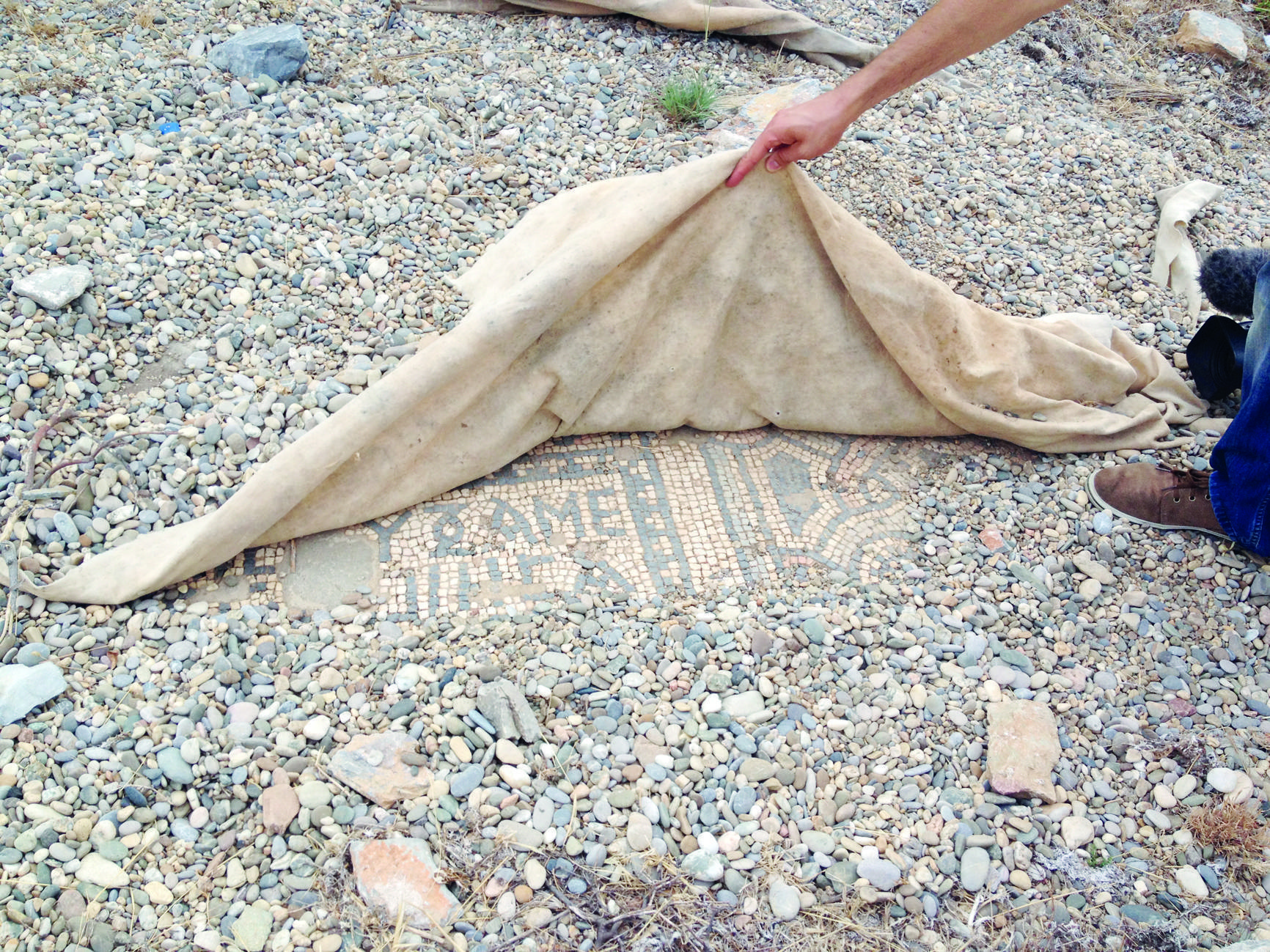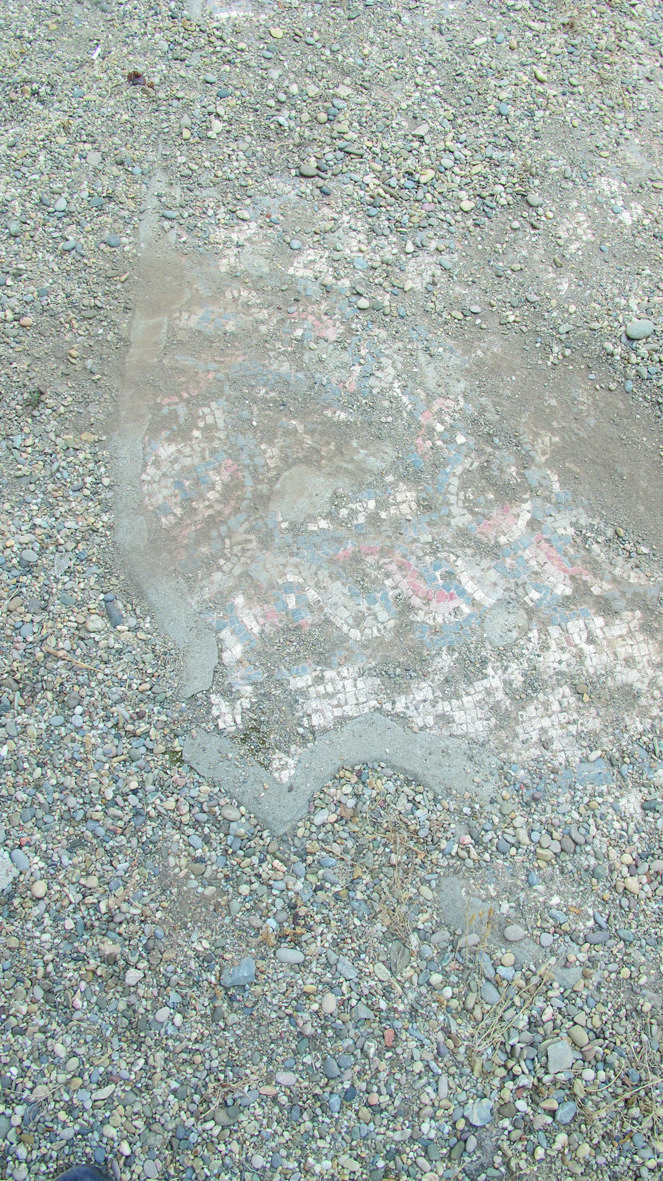Jaw-dropping mosaics abandoned to fate on Med coast
Ömer Erbil ANAMUR / Radikal

Anamur locals recount that all of the houses in the settlement had floor mosaics but that most of them were stolen.

The mosaic reliefs in the ancient town of Anemurium, designated as a historical zone by the Culture and Tourism Ministry, are in pitiful condition, as rags protect the 1,500- to 1,700-year-old mosaics.
There are neither security cameras nor warning signs for the mosaics prone to every kind of physical harm. Some of the mosaics have disintegrated, while some of the tesseras (small pieces of stones that form the mosaic) are plastered with concrete to stop their disintegration.
Anemurium is one of the oldest settlements in the mountainous Cilicia region. The centuries-old settlement, which still stands tall on Anamur Point, the southernmost point of the Mediterranean, has not received necessary attention and protection. One of the most important features of the ancient town is the ground mosaics. However, most of the mosaics are gone, stolen or destroyed by natural elements.
We visited the fourth-century church at the entrance of the Anemurium during a recent trip to Anamur. Only the foundations and a piece of the dome structure remain from the church. While I took photographs, a section covered with rags drew my attention. Usually archaeologists who find fresh mosaics and paintings during excavations use this as a protection measure before commencing scientific research. I opened a small piece of the rags, guessing there was a mosaic underneath.
We saw a mosaic of incredible beauty. If we had lifted the mosaic a little more, we might have seen a mosaic with a bird figurine or a depiction of a mythological god. But afraid to expose the mosaic, we only lifted the corner of the rags.
It was heartbreaking to see such beautiful mosaics being protected in such a way. There were no warning signs, no information panels and not even protective bands. Although the settlement is guarded, no one came to see what we were doing with the mosaics, even after standing there for more than an hour. It is not hard to understand how mosaics were stolen from this haphazardly protected ancient town, which is easily accessible from both land and sea.

The scenery was far worse while we visited the other parts of the settlement. The mosaics of a third-century Roman basilica were left out in the open, even without any protective rags. The visitors were dwelling on the mosaics. The tesseras of the mosaics were plastered by concrete – probably – to protect them from the forces of nature. But the tesseras were already in a bad state due to their exposure. We could not understand why people were barbarically destroying such a beautiful city instead of opening it to tourism and contributing to the science of archaeology.
Excavations abandoned 15 years agoAnemurium was first known by the West, thanks to Francis Beaufort, a 19th-century British explorer. Elisabeth Alfoldi Rosenbaum of the University of Toronto started its first excavations in the 1960s, and Canadian Professor James Russel continued the excavations until 2000. No archaeological research has taken place in the settlement for almost 15 years. After it was taken over by the Turkish Travel Agencies Union (TURSAB), only wild weeds were cleansed from the settlement.
The locals we spoke with in Anamur said they were happy because the town was covered in weeds and foliage until last year. Locals older than 40 also recounted that all of the houses in the settlement had floor mosaics but that most of them were stolen. They indicated that these looters came from the sea and stole the findings with their yachts.
The city, which has a long history, was ruled by the Luvies, Arzavas, Cilicians, Seleucids, Kizzuwatnians, Hittites, Assyrians, Persians, Romans, Byzantines and Arabs.

 The mosaic reliefs in the ancient town of Anemurium, designated as a historical zone by the Culture and Tourism Ministry, are in pitiful condition, as rags protect the 1,500- to 1,700-year-old mosaics.
The mosaic reliefs in the ancient town of Anemurium, designated as a historical zone by the Culture and Tourism Ministry, are in pitiful condition, as rags protect the 1,500- to 1,700-year-old mosaics.  The scenery was far worse while we visited the other parts of the settlement. The mosaics of a third-century Roman basilica were left out in the open, even without any protective rags. The visitors were dwelling on the mosaics. The tesseras of the mosaics were plastered by concrete – probably – to protect them from the forces of nature. But the tesseras were already in a bad state due to their exposure. We could not understand why people were barbarically destroying such a beautiful city instead of opening it to tourism and contributing to the science of archaeology.
The scenery was far worse while we visited the other parts of the settlement. The mosaics of a third-century Roman basilica were left out in the open, even without any protective rags. The visitors were dwelling on the mosaics. The tesseras of the mosaics were plastered by concrete – probably – to protect them from the forces of nature. But the tesseras were already in a bad state due to their exposure. We could not understand why people were barbarically destroying such a beautiful city instead of opening it to tourism and contributing to the science of archaeology.